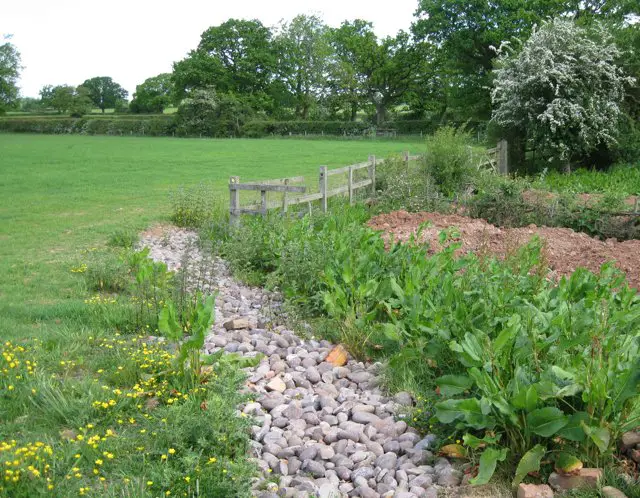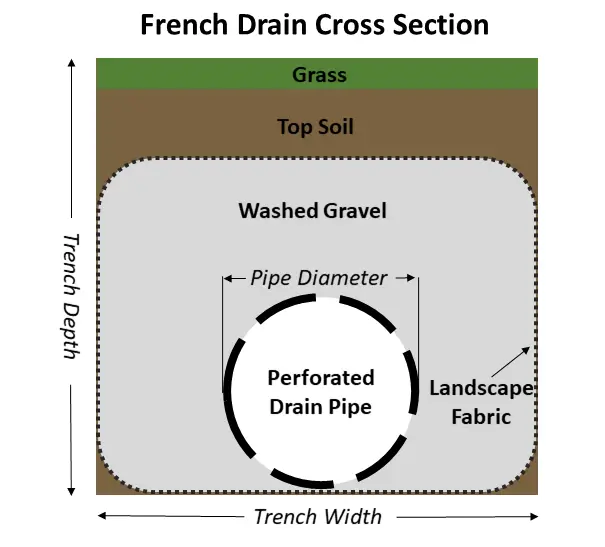With this French drain calculator you can estimate the cubic feet, yards, and tons of gravel needed for installation.
Just a heads up, this page contains affiliate links. If you buy through them I earn a small commission. If you chose to buy through these links I truly thank you for your support! – Jake

FRENCH DRAIN GRAVEL CALCULATOR
How To Use This Calculator
First, enter the length of the French drain you are installing.
Next, enter the width of the French drain. In most installations, an 8-12″ wide trench will suffice.
Enter the depth of the French drain. The standard depth is about 12″. On average this will allow for about 5″ of gravel above a 4″ drain pipe, and 3″ of top soil/grass above that.
The depth may need to be increased if there are any humps or variability in slope of the area being trenched. This will ensure a pitch can be maintained throughout the entire length of the drain.
Finally, enter the outside diameter of the drain pipe being installed in the trench and hit calculate. For most residential applications a 4″ perforated PVC pipe will suffice. These pipes have an actual outside diameter of 4.215″.
Note that the amount of excavated soil to be removed does not include the top 3″ of grass/soil. It is assumed this layer will be put back over the top of the French drain.
Note the amount of excavated soil to be removed takes into account a 30% expansion factor. This is typically how much soil expands after it is dug up from a compacted state.
French Drain Installation Tips
Type of Gravel
-
- Use 3/4″ washed angular gravel for most French drain installations that contain perforated pipes. This type of stone will pack well while still allowing water to percolate through the voids.
- Do not use pea gravel as it does not pack well and can clog up easily with silt

Slope
-
- Drainage pipes installed in French drains should have at least an 1/8″ per foot slope. For more on calculating drain pipe slopes, click here.
Installation Steps
-
- Install the French drain in a low area where most of the water pools
- Call Diggers Hotline before digging to get any underground utilities marked
- Try to avoid trenching near trees and other roots
- You can reuse the grass if it is cut out like rolls of sod, about 3″ thick. For more info on sod installation calculations click here.
- The French drain should “drain to daylight,” aka a lower area like a ditch or hillside
- You can use a catch basin like this one in real swampy areas to capture surface water at the beginning of the drain. I’ve used these with good success.
-
- Double check the entire trench bottom has a slope before installing the pipe and gravel
- Line trench with quality landscape fabric before placing pipe in trench. This will mitigate silt clogging the gravel down the road.
- Lay bricks or other heavy objects onto the drain pipe before backfilling with gravel so pipe does not “lift” itself up when the gravel is poured in.
- Lay the fabric over the top of the gravel before backfilling with soil
- Mound the soil on top of the trench about 1″ higher than the surrounding ground to account for any settling in the future
- For a more detailed guide on French drain installations, click here.
A French drain can be a great way to solve water pooling and water intrusion problems in your backyard. If you carefully estimate the gravel you will need using the French drain gravel calculator above and follow the tips outlined you can ensure a successful project.


